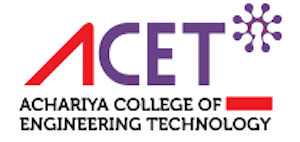MAINTENANCE COMMITTEE
ABOUT
A Maintenance Committee is a specialized body within an organization, commonly found in residential communities, homeowners’ associations, condominiums, or commercial properties, tasked with overseeing the maintenance and upkeep of the physical infrastructure, facilities, and common areas. The primary purpose of a Maintenance Committee is to ensure the proper functioning, cleanliness, safety, and aesthetics of the property while maximizing its long-term value and utility for residents or occupants.
Maintenance Committees play a crucial role in managing the maintenance and repair needs of buildings, grounds, utilities, and other common elements shared by the community or occupants. They are responsible for coordinating maintenance activities, prioritizing repairs, allocating resources, and ensuring compliance with regulatory requirements and industry standards.
Key functions of a Maintenance Committee
- Inspection and Assessment: Conducting regular inspections and assessments of the property’s infrastructure, facilities, and common areas to identify maintenance needs, deficiencies, safety hazards, and areas requiring attention.
- Maintenance Planning and Budgeting: Developing comprehensive maintenance plans, schedules, and budgets to address routine maintenance tasks, preventive maintenance activities, and capital improvement projects in a cost-effective and timely manner.
- Vendor Management: Soliciting bids, selecting contractors, negotiating service agreements, and overseeing the performance of vendors, contractors, and service providers engaged in maintenance, repair, and renovation projects.
- Emergency Response and Disaster Preparedness: Establishing emergency response protocols, contingency plans, and disaster preparedness measures to address unforeseen events, natural disasters, and emergencies affecting the property’s integrity, safety, or functionality.
- Environmental Sustainability: Promoting energy efficiency, sustainability practices, and green initiatives in maintenance activities, such as water conservation, waste management, landscaping, and building upgrades, to minimize environmental impact and reduce operating costs.
- Resident Communication and Feedback: Communicating regularly with residents or occupants about maintenance activities, schedules, and updates, soliciting feedback, addressing concerns, and promoting community engagement and participation in maintenance efforts.
- Compliance and Regulations: Ensuring compliance with local building codes, zoning regulations, health and safety standards, and maintenance requirements set forth by regulatory authorities, homeowners’ associations, or governing bodies.
- Long-Term Planning and Asset Management: Developing long-term maintenance strategies, capital reserve plans, and asset management frameworks to preserve the property’s value, extend its lifespan, and anticipate future maintenance needs and expenditures.
MAINTENANCE COMMITTEE MEMBERS
| S.NO | NAME OF THE STAFF MEMBERS | DESIGNATION & DEPARTMENT | POSITION |
| 1 | Dr S. Gurulingam | Principal | Chairperson |
| 2 | Mr. S. Rajendraprasad | Head of the Department/ CIVIL | Convener |
| 3 | Mrs. P. Amudha | Assistant Professor / CIVIL | Coordinator |
| 4 | Mr. K. Ganeshan | Assistant Professor / CSE | Coordinator |
| 5 | Mr. N. Sudhagar | Assistant Professor / ECE | Coordinator |
| 6 | Mr. Sasikumar | Assistant Professor / EEE | Coordinator |
| 7 | Mr. Vijayababu | Assistant Professor / MECH | Coordinator |
| 8 | Mr. V. Arun | Assistant Professor / S&H | Coordinator |
| 9 | Mrs. S. Kalaichelvi | Assistant Professor /AI&DS | Coordinator |


